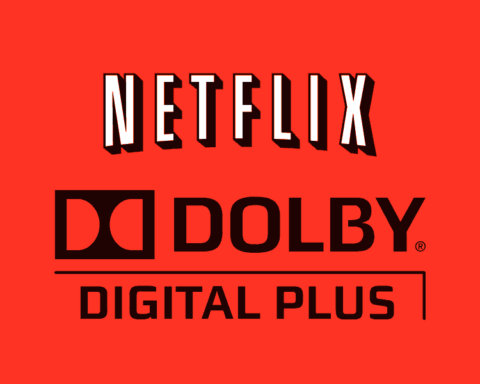Creating a film is a labor of love, especially for indie filmmakers who often pour their hearts, souls, and personal savings into their projects. However, passion alone won’t pay the bills. To sustain your career and continue making films, it’s essential to turn that passion into profit. Monetizing an indie film can be challenging, but with the right strategies, you can generate revenue and ensure that your creative work reaches a wide audience. In this blog, we’ll explore various monetization strategies that indie filmmakers can use to turn their films into profitable ventures.
Turning your indie film into a global sensation starts with smart distribution—reach beyond borders, and let your story find its audience,
1. Crowdfunding: Funding Your Film from the Start
Before even thinking about how to monetize your finished film, you can start generating revenue during the production process through crowdfunding. Platforms like Kickstarter, Indiegogo, and Seed&Spark allow filmmakers to raise funds directly from their audience. Here’s how to maximize the potential of crowdfunding:
- Build a Compelling Campaign: Your crowdfunding campaign should tell a story. Explain why your film is important, what makes it unique, and how the funds will be used. High-quality videos, concept art, and behind-the-scenes footage can make your campaign more engaging.
- Offer Attractive Rewards: To incentivize contributions, offer a range of rewards based on different contribution levels. These could include digital copies of the film, exclusive behind-the-scenes content, personalized shout-outs, merchandise, or even credits in the film.
- Engage Your Audience: Crowdfunding is not just about asking for money—it’s about building a community. Keep your backers updated with regular posts, behind-the-scenes content, and progress reports. Engaging with your audience can create a loyal fanbase that supports your future projects as well.
2. Film Festivals and Awards: Building Prestige and Earning Revenue
Film festivals are a great way to showcase your work, gain critical acclaim, and attract the attention of distributors. While some festivals offer monetary prizes, the real value often lies in the exposure and networking opportunities they provide. Use Film Freeway to submit your films.

- Networking Opportunities: Film festivals offer valuable networking opportunities with distributors, producers, and other filmmakers. Building these connections can lead to distribution deals, partnerships, and future monetization opportunities.
- Select the Right Festivals: Not all film festivals are created equal. Research and choose festivals that align with your film’s genre, theme, and target audience. High-profile festivals like Sundance, Cannes, and Toronto International Film Festival (TIFF) can open doors to distribution deals and wider recognition.
- Monetary Awards and Grants: Some festivals offer cash prizes, grants, or fellowships for standout films. These awards can help recoup production costs or fund your next project. Applying for grants from film organizations and cultural institutions can also provide additional financial support.
3. Digital Distribution: Reaching a Global Audience
In today’s digital age, online distribution is one of the most effective ways to monetize an indie film. Platforms like Amazon Prime Video, iTunes, Google Play, and Vimeo On Demand offer filmmakers the opportunity to reach a global audience.
- Self-Distribution Platforms: Services like VHX, Amazon Prime Video Direct and Vimeo On Demand allow filmmakers to upload their films directly to the platform, setting their own pricing and earning a percentage of sales or rentals. These platforms offer flexibility and control, but success often depends on your ability to market your film effectively.
- Aggregation Services: If managing distribution across multiple platforms sounds overwhelming, consider using an aggregator like Filmhub. Filmhub, in particular, is a popular choice among indie filmmakers because it offers distribution across numerous global streaming platforms without upfront fees. Instead, Filmhub takes a percentage of the revenue generated from the platforms your film is distributed on. This service can simplify the distribution process and increase your film’s visibility across different markets.
- Subscription Streaming Services: Securing a deal with a subscription-based streaming service like Netflix, Hulu, or HBO Max can be highly lucrative, but it’s also competitive. These platforms typically pay a licensing fee to stream your film for a set period. To get noticed, consider working with a sales agent or distributor who has established relationships with these services
- Producing for PBS: PBS provides resources and guidelines for independent producers interested in submitting content for broadcast. This includes the need for a strong proposal, rights clearances, and meeting technical standards. Producers are encouraged to partner with PBS member stations or national producing organizations. PBS focuses on content that aligns with its mission to educate, inspire, and entertain, with an emphasis on quality, integrity, and public service.
- For more detailed information, you can visit the PBS Producing for PBS page.
4. Physical Media: DVDs, Blu-rays, and Merchandise
While digital distribution has become the norm, physical media still holds value, particularly for collectors and fans who appreciate tangible products. Selling DVDs, Blu-rays, and merchandise can provide an additional revenue stream.

- Special Editions: Consider creating special edition DVDs or Blu-rays that include bonus features, director’s commentary, behind-the-scenes footage, and deleted scenes. Limited edition packaging or autographed copies can also appeal to collectors.
- Merchandise: Expanding your film’s brand through merchandise can be a profitable venture. T-shirts, posters, mugs, and other branded items not only generate revenue but also help promote your film. Online platforms like Teespring and Etsy make it easy to create and sell merchandise with minimal upfront costs.
- Bundling Products: Offer bundles that include a DVD or Blu-ray along with merchandise items. Bundling can increase the perceived value and encourage fans to spend more.
5. Theatrical and Community Screenings: Engaging Local Audiences
Although getting a wide theatrical release can be difficult for indie films, smaller-scale screenings can still be profitable and impactful. Local theaters, community centers, film clubs, and educational institutions are potential venues for screening your film.
- Four-Wall Distribution: With four-wall distribution, you rent a theater for a screening of your film and keep all ticket sales. This strategy requires upfront investment but can be profitable if you can draw a significant audience.
- Film Tours: Organize a film tour where you screen your film in different cities, either at independent theaters or community venues. This approach allows you to engage directly with audiences, sell merchandise, and build a fanbase.
- Collaborate with Organizations: Partner with local organizations, schools, or non-profits that align with your film’s themes to organize screenings. These partnerships can help you reach a targeted audience and may include opportunities for Q&A sessions, panel discussions, or workshops.
6. Educational and Institutional Licensing: Tapping into Niche Markets
Educational institutions, libraries, and non-profits often purchase films for educational purposes or to support their mission. Licensing your film to these institutions can be a steady revenue stream.
- Educational Licensing: Offer your film for licensing to schools, colleges, and universities. Films with educational content, social impact themes, or historical relevance are particularly appealing to educators.
- Institutional Screenings: Non-profit organizations, museums, and cultural institutions may be interested in screening your film as part of their programming. These screenings can be accompanied by workshops, discussions, or Q&A sessions, providing additional value.
- Create Study Guides: Enhance the educational value of your film by creating study guides, discussion questions, or lesson plans. These materials can make your film more attractive to educators and increase the likelihood of securing licensing deals.
7. VOD and PPV Platforms: Pay-Per-View and Video on Demand
Video on Demand (VOD) and Pay-Per-View (PPV) platforms allow viewers to pay for access to your film on a per-view basis. This model offers flexibility in pricing and can be an effective way to monetize your film, especially for niche audiences.
- Transactional VOD (TVOD): With TVOD, viewers pay a one-time fee to rent or purchase your film. This model works well for films with strong, targeted marketing campaigns or a dedicated fanbase. Platforms like iTunes, Google Play, and Vimeo On Demand support TVOD.
- Subscription VOD (SVOD): Platforms like Netflix, Hulu, and Amazon Prime Video offer subscription-based models where viewers pay a monthly fee for access to a library of content. Licensing your film to an SVOD platform can provide a steady revenue stream, especially if your film attracts a large number of views.
- Crowdsourced VOD (CVOD): Some platforms allow you to set a funding goal and release your film once the goal is met. This model combines crowdfunding with VOD and is useful for films with a passionate audience willing to support the release.
8. Ancillary Revenue Streams: Beyond the Film Itself
In addition to direct film sales and screenings, there are ancillary revenue streams that can enhance your overall profitability.
- Books and Novels: If your film has a strong narrative, consider turning it into a book or novel. Self-publishing platforms like Amazon Kindle Direct Publishing (KDP) allow you to create and sell books based on your film’s story.
- Workshops and Seminars: Share your expertise by offering workshops or seminars related to your film’s subject matter. This could include filmmaking workshops, screenwriting courses, or discussions on the themes explored in your film. Charging for these events can generate additional income.
- Licensing for Adaptations: If your film gains traction, you might consider licensing the rights for adaptations, such as remakes, TV series, or even stage productions. Licensing agreements can provide substantial revenue if your film becomes popular.
9. Marketing Your Film: The Key to Monetization
Regardless of the monetization strategies you choose, effective marketing is crucial to driving sales and generating revenue. Here are some tips for promoting your film:
- Build an Online Presence: Create a website and social media profiles for your film. Regularly update your audience with trailers, posters, behind-the-scenes content, and news about screenings and distribution. Engage with your followers to build a loyal fanbase.
- Leverage Influencers and Media: Reach out to influencers, bloggers, and media outlets that cover indie films. Positive reviews, interviews, and features can significantly boost your film’s visibility.
- Email Marketing: Collect email addresses from your audience and send regular newsletters with updates, exclusive content, and promotional offers. Email marketing is a direct way to communicate with your fans and encourage them to support your film.
- Film Festivals and Awards: As mentioned earlier, film festivals can provide valuable exposure. Winning awards or receiving critical acclaim can be a major selling point when marketing your film to distributors and audiences.
Conclusion: Turning Passion into Profit
Monetizing an indie film is a multifaceted process that requires creativity, perseverance, and strategic planning. By exploring various revenue streams—ranging from crowdfunding and digital distribution to merchandise and educational licensing—you can generate income and ensure that your film reaches its audience.
While the journey from passion to profit can be challenging, it’s also incredibly rewarding. Each revenue stream you tap into brings you one step closer to financial sustainability, allowing you to continue creating and sharing your unique stories with the world. With the right strategies in place, your indie film can become more than just a labor of love—it can be a profitable venture that fuels your filmmaking career for years to come.











